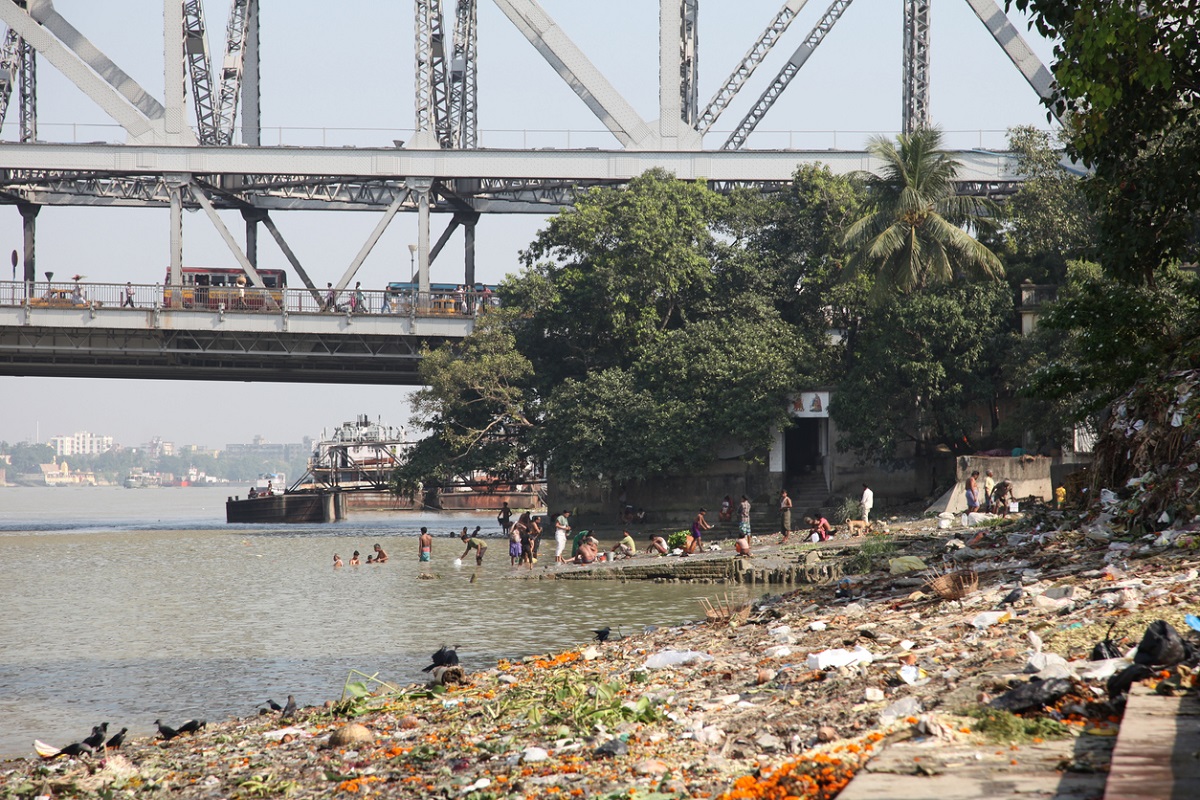Delhi BJP complaints to EC against AAP’s alleged bid to manipulate votes
They submitted some documents at the Election Commission office in support of their allegation.
A comprehensive plan of action is, therefore, imperative though the cleansing of Kolkata might well ruffle feathers in various quarters not least the transport sector which will be expected to scrap vehicles beyond a certain dotage.

People bathing underneath Howrah bridge, (Stock image)
Even as the judiciary and media are convulsed annually by Delhi’s air quality, Kolkata has incurred the dubious distinction of being quite the worst polluted city in the country. As the city hovers through fog and filthy air, the World Bank has offered to help the West Bengal government, provided it accords priority to tackling air pollution. Thus far the effort has been wholly inadequate, almost perfunctory. The issue warrants the uppermost priority. To the average citizen, masked or otherwise, it is closer to the bone than the ill-informed discourse on an air strike. A partnership between the Washington-based Bank and the State is, therefore, imperative going by the projection of the World Bank’s programme for infrastructure and development. It devolves on the state government and the rather ineffectual West Bengal Pollution Control Board to reflect on the offer advanced by the Bank, which is endowed with resources, expertise and also, of course, the will to perform. Going by its performance since its creation, the PCB appears to be deficient on all three critical counts. The effort of the government in the wider canvas has never quite matched the enormity of the city’s environmental degradation. Much will hinge on the scheduled meeting of the Chief Minister and the World Bank’s country director, Junaid Ahmad. The outcome of the meeting will determine whether the amount sought by the State from the Bank to tackle pollution will be increased. At the recent Bengal Global Business Summit, the State had sought one billion dollars from the World Bank. If earnestly executed, the State’s support for the Bank’s plan of action ought to be yet another mission towards urban renewal. The existing Jawaharlal Nehru Urban Renewal Mission with a different agenda has alas turned out to be an essay towards urban regression. The “murder of the Maidan”, this newspaper’s epithet in the early 1970s, has become endemic over the past 40 years and more. The city can only delude itself if the area is still referred to as its “lungs”. Endemic pollution in the city plagues the Maidan, to the extent that parts of Victoria Memorial’s white marble look discoloured ~ the outcome of unfit, belching vehicles and the parking of trucks and buses, most particularly during the Ganga Sagar mela. A comprehensive plan of action is, therefore, imperative though the cleansing of Kolkata might well ruffle feathers in various quarters not least the transport sector which will be expected to scrap vehicles beyond a certain dotage. Not wholly unrelated is the pollution caused by toxic fumes – and sound – from the unbridled use of crackers, especially around Diwali. A crucial fallout has been the decline of public health, with more and more people complaining of breathlessness. Not to put too fine a point on it, the government’s awareness, civic awareness and a sense of responsibility have become breathlessly necessary. The State must accept the World Bank’s assistance and the terms of engagement.
Advertisement
Advertisement